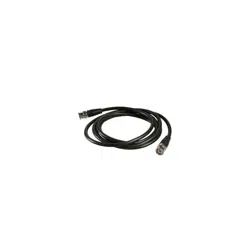Loading ...
Loading ...
Loading ...

Sarix® Modular Camera Operations Manual
C6719M | 02/22
24
Configuring A/V Streams
Configure compression and image rate, smart compression, RTSPstream URI, Still Image
URI,AudioConfigurations, and advanced smart compression on the A/V Streams page.
Compression and Image Rate
On the Compression and Image Rate page, you can change the camera’s compression and image quality
settings for sending video over the network.
Caution:The Sarix Modular Camera has multiple camera heads in a single camera. Some settings
apply to the camera as a whole; other settings apply to individual heads. Certain multi-head camera
settings can be set globally for all of the heads. Other settings must be set for each individual head.
When configuring a camera, configure both the global and the individual head settings.
To enable easy access and lower bandwidth usage, the web interface only displays video in JPEG format.
The settings on this page only affect the video transmitted to the network video management software.
Pelco High Definition H.264 IP cameras have dual stream capabilities. If the camera’s streaming format is
set to H.264, the camera's web interface can still display live video in JPEG format.
Note: Configure the camera's secondary stream using your VMS; it cannot be configured in the
camera's web client.
Note: The camera might automatically adjust compression quality in order to abide by the bandwidth
cap specified.
1. Click the A/V Streams tab, and then click the VideoConfigurations button.
2. In the Compression and ImageRate area, for each camera head:
a. Click Head [#] to select the head to configure.
b. In the Format drop-down menu, select the preferred streaming format for displaying the
camera video in the network video management software.
If you are using the Onboard Storage feature, select H.264 or H.265. For more information, see
Enabling Onboard Storage. Otherwise, select MJPEG.
c. In the Max Image Rate field, enter how many images per second you want the camera to
stream over the network.
Note
: Adjusting the image rate across the 30 fps boundary will stop the video stream for
a few seconds.
If the camera is operating in High Framerate mode, then the maximum image rate is increased.
For more information on the High Framerate mode, see Configuring General Settings.
d. In the Max Quality drop-down menu, select the desired image quality level.
Image quality setting of 1 will produce the highest quality video and require the most
bandwidth.
e. If you selected H.264 or H.265, in the Max Bitrate field, enter the maximum bandwidth the
camera can use.
f. In the Primary Resolution drop-down menu, select the preferred image resolution.
Loading ...
Loading ...
Loading ...
